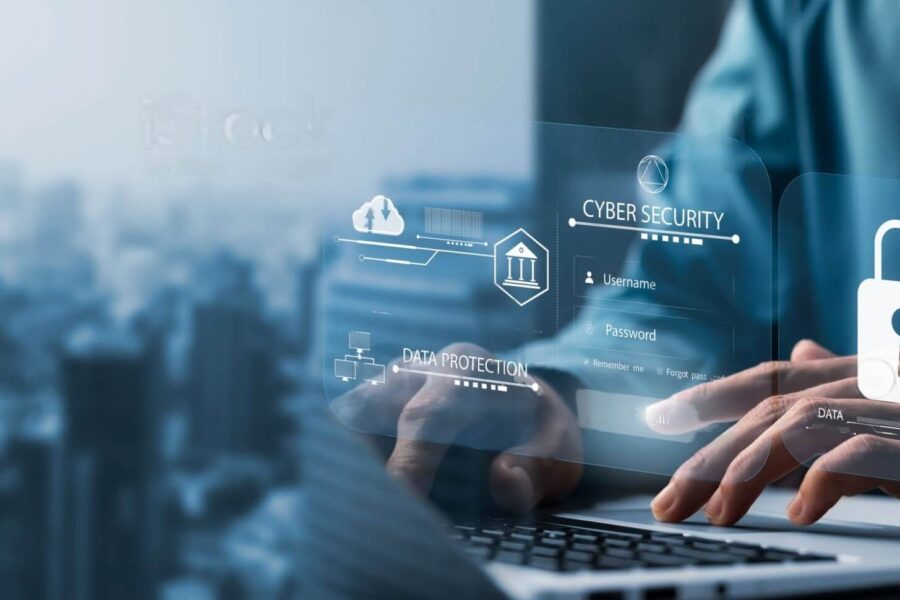”Across all industries, data is as valuable as oil in driving economies and operations. Consequently, safeguarding this digital treasure trove has become vital.
Gagandeep KholiIndia's Country Manager at XRATOR

In the rapidly evolving cybersecurity landscape, safeguarding digital assets and data has become instrumental across all industries. Gagandeep Kohli, India’s country manager for XRATOR, brings profound insights into cybersecurity through an engaging Q&A session. As a seasoned cybersecurity expert, Gagandeep brings expertise and experience to the critical aspects of cybersecurity, from the challenges faced by businesses in the digital era to the innovative strategies and technologies developed to counter emerging cyber risks.
In this Q&A, he elaborates on the pivotal role of cybersecurity in a data-driven world. From emphasizing the significance of data protection to addressing the misconceptions surrounding cybersecurity costs and risks, Gagandeep provides valuable perspectives and actionable strategies for businesses seeking to fortify their digital defenses.
Through real-life examples, Gagandeep highlights the industries most vulnerable to cyber threats and showcases the impact of XRATOR’s advanced solutions on enhancing cybersecurity resilience.
Delving into the importance of employee awareness and training, Gagandeep underlines the role of individuals as the first line of defense against cyber threats. By elaborating on XRATOR’s proactive approach to countering evolving risks, he elucidates how the company remains ahead of the curve in developing new strategies and technologies.
THE IMPORTANCE OF A CYBERSECURITY STRATEGY
Why does cybersecurity matter in our era, and what are the key challenges businesses face in today’s digital landscape?
Across all industries, data is as valuable as oil in driving economies and operations. Consequently, safeguarding this digital treasure trove has become vital. The value of data underscores the criticality of protecting and securing it, as its compromise can lead to dire consequences. Businesses can be injured when their vital data is stolen or leaked, often leading to irrevocable losses. Shockingly, statistics reveal that 60% of startups shut down within a year of falling victim to a cyberattack.
In tandem with the rising importance of data protection, the frequency and sophistication of cyberattacks have seen exponential growth. The prevalent notion that cybersecurity is merely an enterprise concern created a myopic perspective. Cybersecurity’s inclusive nature requires participation across the entire organizational spectrum. Additionally, siloed risk management practices hinder an organization’s ability to manage threats holistically, resulting in potential vulnerabilities across various segments.
The overwhelming complexity of cybersecurity often deters effective risk management. Rapidly evolving threats and technical tools frequently lead to more questions than solutions. Potent when properly managed, these tools often require specialized expertise. Moreover, a one-size-fits-all approach to risk assessment falls short, and risk evaluation should be tailored to an organization’s unique business landscape, aligning with its specific objectives and vulnerabilities. Nonetheless, generic risk measurement frameworks persist, failing to capture the nuances of individual enterprises.
Can you provide examples of recent high-profile cyber breaches and their impact on businesses, highlighting what was at stake for those organizations?
The omnipresence of cyber threats affects many industries, irrespective of their sector. However, enterprises and industries that host critical data prove vulnerable to a higher frequency of attacks. The healthcare sector, for instance, embodies an industry where data’s criticality is paramount. Distressingly, recent incidents reflect this vulnerability.
For example, the renowned AIIMS Hospital recently experienced a brutal cyberattack. The repercussions were far-reaching, with lives lost and critical surgeries suspended for over two weeks. This stark illustration of the potential consequences underscores the urgent need for enhanced cybersecurity measures, especially in industries where lives hang in the balance.
The impact of cyber breaches extends beyond healthcare. SpiceJet Airlines, a major player in the aviation sector, encountered operational paralysis when its systems were compromised. Unable to operate flights for two days, the airline incurred substantial losses of millions of dollars. This episode lays bare the cascading effects of cyberattacks, reaching far beyond data breaches.
Furthermore, the recent attack on Citrix, a backbone supporting half of the world’s software, sent shockwaves throughout various organizations that depend on its services. The havoc the attack wreaked resonates with the digital world’s interconnected nature, where vulnerabilities in one entity’s security posture can create a domino effect across multiple organizations.

THE COST OF A CYBERSECURITY BREACH
How would you quantify the potential costs of a cybersecurity breach for businesses, including financial, reputational, and operational consequences?
The intricate process of quantifying the potential costs of a cybersecurity breach necessitates a multidimensional approach uniquely tailored to each organization’s context. The nuances of the breach, company size, industry, and mitigation efforts all contribute to the diverse range of actual costs.
The Ponemon Institute and IBM‘s 2019 study highlights that a data breach’s average cost of reputational damage amounted to a staggering $3.92 million. Regulatory penalties loom as significant financial liabilities, especially in sectors bound by stringent data protection regulations. For instance, the European Union’s GDPR imposes fines that could reach up to 4% of a company’s global annual revenue or €20 million, depending on which is higher.
Delving deeper, the 2021 Cost of a Data Breach Report by IBM and Ponemon Institute reports an average cost of approximately $1.83 million for incident response and containment. However, implementing AI-based cybersecurity and automation alters this financial landscape. A striking statistic emerges from an IBM report: companies without AI-based cybersecurity and automation expend an average of $6.7 million to recover from a security breach—more than twice the amount incurred by companies fully embracing automation, who spend a mere $2.9 million. This 130% savings is a testament to the transformative potential of AI-enabled cybersecurity.
What are businesses’ common misconceptions or underestimations regarding the costs and risks associated with cybersecurity breaches?
Unearthing common misconceptions and underestimations regarding the costs and risks tied to cybersecurity breaches unveils a need for heightened awareness and a recalibration of approach:
Ignoring Small Businesses as Targets
A prevalent misconception assumes that cybercriminals only target large corporations. However, the rise of ransomware attacks underscores the vulnerability of small businesses with weaker defenses.
Overemphasis on Technology Solutions: Overreliance on advanced cybersecurity technologies without considering human factors and robust processes leads to vulnerability.
Assuming Insurance Coverage is Sufficient
Relying solely on cyber insurance might leave organizations unprepared for significant breach-related costs not covered by policies.
Downplaying Insider Threats: While external threats receive substantial attention, insider threats, both malicious and accidental, pose significant risks and are often overlooked.
Ignoring Supply Chain Risks
Failing to assess third-party cybersecurity can lead to supply chain attacks that compromise operations.
Assuming Compliance Equals Security
Meeting regulatory standards doesn’t guarantee robust cybersecurity practices.
Believing Cybersecurity Is IT’s Responsibility: Cybersecurity extends beyond IT to encompass the entire organization.
Failure to Keep Pace with Evolving Threats
Neglecting to stay informed about evolving threats results in outdated defenses.
Lack of Incident Response Planning: Unprepared incident response plan exacerbates the consequences of a breach.
Addressing these misconceptions through education, awareness, and proactive risk management is vital for building comprehensive cybersecurity strategies.
Now let’s talk about the problems and solutions regarding the costs and risks associated with cybersecurity.
- Problem 1
The primary component of cybersecurity cost is the skilled workforce, which is often scarce and costly due to limited talent pools.
- Solution 1
Automation emerges as a remedy, significantly reducing labor costs while improving efficiency and reliability. This automated approach to cybersecurity not only enhances cost-effectiveness but also augments overall risk management.
- Problem 2
The costs related to technology adoption for cyber attack prevention often lead to decision-making paralysis due to data overflow from various sources, rendering strategic clarity elusive.
- Solution 2
Integrating an all-encompassing platform that interprets data overflow and delivers strategic insights is crucial. XRATOR exemplifies a platform allowing executives to make informed, data-driven decisions.
Addressing these challenges with innovative solutions, as exemplified by XRATOR, elevates cybersecurity readiness while mitigating costs and complexities. Which is why it is so important to create a cybersecurity strategy.
In your experience, which industries are most vulnerable to cyber threats, and why? Could you share specific incidents or trends highlighting the need for increased cybersecurity measures in these sectors?
Several industries stand out as particularly vulnerable to cyber threats, often due to the nature of their operations and the value of the data they handle:
Healthcare
Healthcare organizations store vast amounts of sensitive patient data, making them lucrative targets for cybercriminals. The increasing integration of digital health systems and medical devices further expands the attack surface.
Finance and Banking
Financial institutions deal with large sums of money and personal data, making them prime targets for cyberattacks aimed at financial fraud and data theft.
Manufacturing
The digitization of manufacturing processes through IoT devices creates new entry points for cyberattacks. Manufacturers can face ransomware attacks, supply chain breaches, and intellectual property theft.
Government and Critical Infrastructure
Government agencies and critical infrastructure sectors are attractive targets due to the potential for disruption and access to classified information.
Recent incidents underscore the need for enhanced cybersecurity in these industries. The WannaCry ransomware attack 2017 affected healthcare institutions and government agencies worldwide, revealing the vulnerabilities within critical sectors. The SolarWinds cyberattack in 2020 targeted government agencies and tech firms, exposing supply chain risks. Moreover, healthcare data breaches, like the Anthem breach, demonstrate the potential consequences of compromised patient data.

HOW TO CREATE A CYBERSECURITY STRATEGY?
What key cybersecurity measures should businesses in these vulnerable industries prioritize to protect their assets and data?
For businesses in vulnerable industries, prioritizing cybersecurity measures are instrumental to ensure an effective protection against cybersecurity breaches and require accountability from everyone involved in the organization:
- Employee Training and Awareness
Educate employees about cyber threats, implement regular training, and conduct phishing simulations to enhance their ability to identify and respond to threats.
- Strong Password Policies
Enforce strong password policies and multi-factor authentication to safeguard access to sensitive data.
- Regular Software Updates and Patch Management
Keep software and systems up to date to address known vulnerabilities promptly.
- Network Segmentation
Segment critical systems and data from less sensitive areas within the network to limit potential attack surfaces.
- Encryption
Implement encryption for sensitive data in transit and at rest to protect against unauthorized access.
- Least Privilege Principle
Limit user access levels to the minimum necessary for their roles to prevent unauthorized access.
- Regular Backups
Regularly backup critical data to ensure business continuity in case of a breach.
Vendor and Third-Party Risk Management: Assess third-party cybersecurity posture to prevent supply chain attacks.
- Employee Device Security
Secure employee devices used for work purposes to prevent potential breaches through these endpoints.
- Regular Security Audits and Penetration Testing
Regularly audit and assess cybersecurity measures through penetration testing to identify vulnerabilities.
What role does employee awareness and training play in effective cybersecurity? How can businesses ensure that their employees are well-informed and actively participate in maintaining a secure environment?
Employee awareness and training are pivotal components of effective cybersecurity strategies. Businesses can ensure their employees are well-informed and engaged in maintaining a secure environment through:
- Phishing Simulations
Conduct regular phishing simulations to assess employees’ susceptibility to phishing attempts and enhance their ability to recognize fraudulent emails.
- Training Programs
Offer ongoing cybersecurity training programs to educate employees about the latest threats, best practices, and incident response procedures.
- Cybersecurity Culture
Foster a cybersecurity-conscious culture by encouraging employees to report suspicious activities and rewarding proactive security behaviors.
- Communication
Continuously communicate the importance of cybersecurity to employees, highlighting their role in protecting sensitive data.
- Executive Involvement
Engage executives and leadership to set an example for cybersecurity best practices, promoting a top-down security culture.
- Gamification
Utilize gamification techniques to make cybersecurity training engaging and interactive for employees. By prioritizing employee awareness and training, businesses can create a human firewall against cyber threats, minimizing the risk of human error and enhancing overall cybersecurity resilience.

XRATOR’S SOLUTION
As cyber threats evolve, how does XRATOR stay ahead in developing new strategies and technologies to counter emerging risks?
XRATOR remains at the forefront of countering emerging cyber threats through several proactive approaches:
Research and Development
A dedicated team of cybersecurity experts and data scientists continuously research and analyze evolving threats to develop effective counterstrategies.
AI and Machine Learning
XRATOR employs advanced AI and machine learning algorithms to rapidly process and analyze vast amounts of data, enabling proactive threat detection.
Collaboration
XRATOR collaborates with cybersecurity experts, researchers, and threat intelligence organizations to stay updated on emerging risks and trends.
Continuous Improvement
XRATOR regularly updates and enhances its platform based on emerging threats, ensuring clients can access the latest defenses.
Red Team Exercises: XRATOR conducts red team exercises and penetration testing on its systems to identify vulnerabilities and improve defenses.
Customer Feedback: XRATOR values client feedback, using it to customize solutions and address specific challenges faced by different industries.
Threat Intelligence Integration
XRATOR integrates threat intelligence feeds into its system, providing real-time threat data for staying ahead of evolving cyber risks.
Training and Education
XRATOR invests in educating its team and clients about emerging threats and best practices, empowering them to make informed decisions.
By leveraging these strategies, XRATOR ensures that its solutions effectively counter emerging cyber threats, enabling organizations to stay ahead of evolving risks.
Could you provide a success story or case study where XRATOR’s solutions significantly impacted a client’s business, demonstrating the value of investing in robust cybersecurity measures?
The problem
Company XYZ, a multinational manufacturing firm, grappled with challenges in traditional cybersecurity methods. Scarce skilled resources and a reliance on manual processes left them vulnerable to evolving cyber threats.
Our Solution
Company XYZ implemented XRATOR’s Operator, an advanced cybersecurity solution that automates processes and offers AI-powered insights.
- Value Chain Cyber Scoring
XRATOR’s Operator mapped all assets, including third-party vendors, into a cyber score, addressing blind spots in cybersecurity.
- Risk-Based Vulnerability Management (RBVM)
Regular vulnerability scans and phishing simulations prioritized risks, allowing efficient allocation of resources for risk mitigation.
- Integrated IT Asset Management
XRATOR’s AI-integrated system monitored assets and risks in real-time, eliminating manual reporting efforts.
- Compliance Management
XRATOR’s centralization of compliance information ensured adherence to regulatory standards.
- Machine-assisted Risk Analysis
Faster, accurate risk analysis enabled timely response to threats.
Results of this cybersecurity strategy
- Improved Cybersecurity
Automated processes detected and remediated vulnerabilities swiftly, enhancing cybersecurity resilience.
- Cost Efficiency
Automation reduced reliance on skilled personnel, saving costs.
- Enhanced Compliance
Compliance management minimized the risk of penalties and reputational damage.
- Resource Allocation
Risk-based vulnerability management optimized resource allocation for risk mitigation.
- Better Communication
User-friendly dashboards facilitated communication among stakeholders.
Concluding thoughts on how to create a cybersecurity strategy
Company XYZ’s experience showcased XRATOR’s effectiveness to create an efficient cybersecurity strategy. By automating preventive measures, offering actionable insights, and fostering communication, XRATOR’s Operator empowered Company XYZ to bolster its cybersecurity posture. The result was fewer incidents, improved resource allocation, and substantial cost savings. This success story highlighted the value of investing in proactive, automated cybersecurity, reinforcing XRATOR’s role in countering emerging cyber threats effectively.
No need to say cybersecurity is critical in today’s data-driven landscape. With data as the new currency, protecting digital assets and opting for effective cybersecurity solutions is crucial.
At svod Advisory, we recognize cybersecurity’s pivotal role in business success. Join forces with us and XRATOR to bolster your cybersecurity and benefit from Gagandeep Kohli’s expertise and XRATOR’s solutions to fortify defenses and safeguard your digital assets. In the face of evolving threats, proactive cybersecurity is essential to maintain an edge. We will therefore assist you to create a successful cybersecurity strategy.
Feel free to book a call with one of our consultants to ensure resilience and thrive in this technology-driven era. Your digital future hinges on it.






